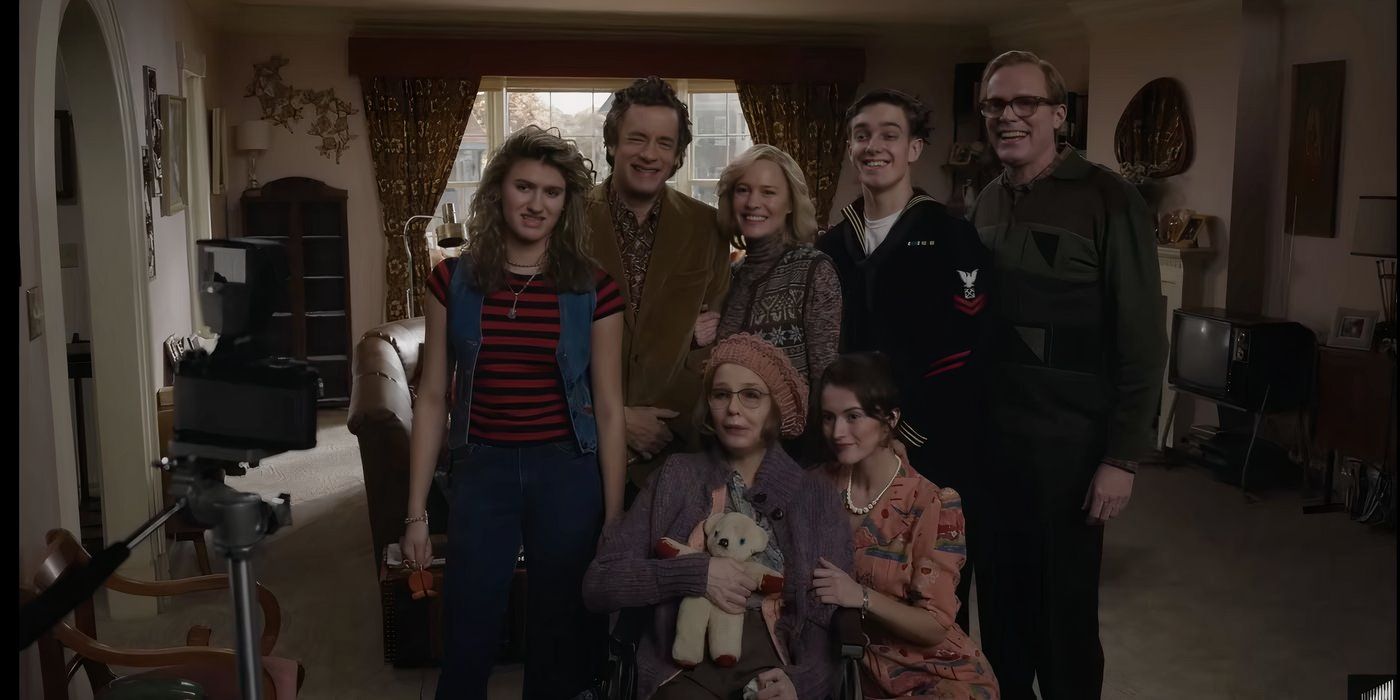Director: Robert Zemeckis
Writers: Eric Roth, Robert Zemeckis
Stars: Tom Hanks, Robin Wright, Paul Bettany
Synopsis: A generational story about families and the special place they inhabit, sharing in love, loss, laughter, and life.
Imagine the living room of the house you grew up in. It’s warm and cozy, and the television hums at a reasonable volume. A friend you really connect with slouches with you on the couch, your hands and their hands clasped and resting on your bellies and your legs draped across the coffee table, theirs, respectfully, stretched out beneath the coffee table because they aren’t, “Like, trying to get your mom mad at them or anything. I mean, she’s, like, the best.”

Then imagine that friend turns to you. You turn to them, the two of you really looking into each other’s acne spotted faces. Your friend then says, “Who do you think lived here before?” You scrunch up your face and reply, “I think my mom and dad bought it from—” Your friend shakes their head, “No, I mean, like, ever.” You stare at your friend confused, “Ever? Like for all time?” Your friend smiles and turns back to the TV nodding, “Like dinosaur times and Native Americans, and like, 1920s people and stuff.”
You turn your head back to the TV, too, your brain barely connecting with what you’re seeing. You’re thinking about the existence of past people in or around your house. Now imagine someone made a graphic novel of that idea and someone else decided to adapt that graphic novel into a film. That film is Here and that film isn’t as good as that idea sounds.
The script that was born from that idea is the most flawed piece of the film. Writers Eric Roth and Robert Zemeckis, in adapting RIchard McGuire’s graphic novel, attempted to go very broad in scope, which disconnected many of the storylines from each other, even the ones that shared a common thread. There were several storylines that took far too long to pay off after we figured out the end point dozens of too quick scenes before. None of the scenes ever gets a chance to actually land. There’s something dramatic and it’s almost like a cut to commercial every time. It’s chopped and stitched to try and connect every storyline, but there is no reason for every story to connect.
It doesn’t help that each storyline is also so obvious that every plot point is telegraphed to the point of audience aggravation. It’s one thing to know what’s coming, it’s another to know what’s coming and have a character turn and wink and then say their line again slower and wink again, then say their line again. The most cringe worthy example is the 1930s/1940s inventor (David Fynn) who tinkers with a new reclining chair and comes up with a stupid name for it and you just start screaming in your head, “It’s Laz-E-Boy! Just say Laz-E-Boy! We all know it! Stop trying to be clever! It’s not clever! Just say it!”

Many of the actors felt as if they were playing these obvious lines in a heightened way. It was so unnatural and, in some cases, laughable. These actors had to get a lot into the very short amount of time allotted to them with the short scenes that play out. To the actors, doing a lot meant doing a great deal of overwrought, unearned, and shallow emotions. Every person that we’re supposed to care about gets so little screen time that to care about them is to acknowledge they have any personality beyond the rote archetypes of the characters they play. It’s not even worth singling any actor out as each performance is so deeply uninteresting. Though, it doesn’t help a character to become three dimensional when the space they inhabit is so one dimensional.
For some reason Robert Zemeckis has become a gimmick filmmaker. Here in Here, his central gimmick is that the camera doesn’t move. Every scene takes place from the same angle. The big problem with this is that film is a visual medium. While there are things happening within the frame, that frame is stagnant. It becomes the least interesting play you’ve ever watched. At least with plays that take place in one room, there’s character development. The attempt to make this style of storytelling dynamic by having a sort of comics panel pop up to reach across the timelines is often less exciting than it is nonsensical. Sometimes these panels are only slightly forward or back in time and it’s confusing why that had to have its own panel at all.
That’s really what Here boils down to; it is nonsense. It attempts to be a film that has a grand message about humanity, Earth, place, and home, but it never lands, ever. What Here is, is Boomer dopamine. It validates and embraces nostalgia. It lets Boomers let out contented sighs, chuckles, grunts of approval, and, yes, tears at its absolutely shallow schmaltz. Here is not a movie for everyone. It’s not even close to a movie for now, even with its bizarrely shoe-horned conversation between Black parents and their teenage son about what to do when he is pulled over by a police officer. Here is a movie for people who want something that looks different, but has the exact same notes and DNA as every domestic drama they’ve ever seen. Here is a movie for them and only for them. The rest of us can and should just watch something, anything, else.





